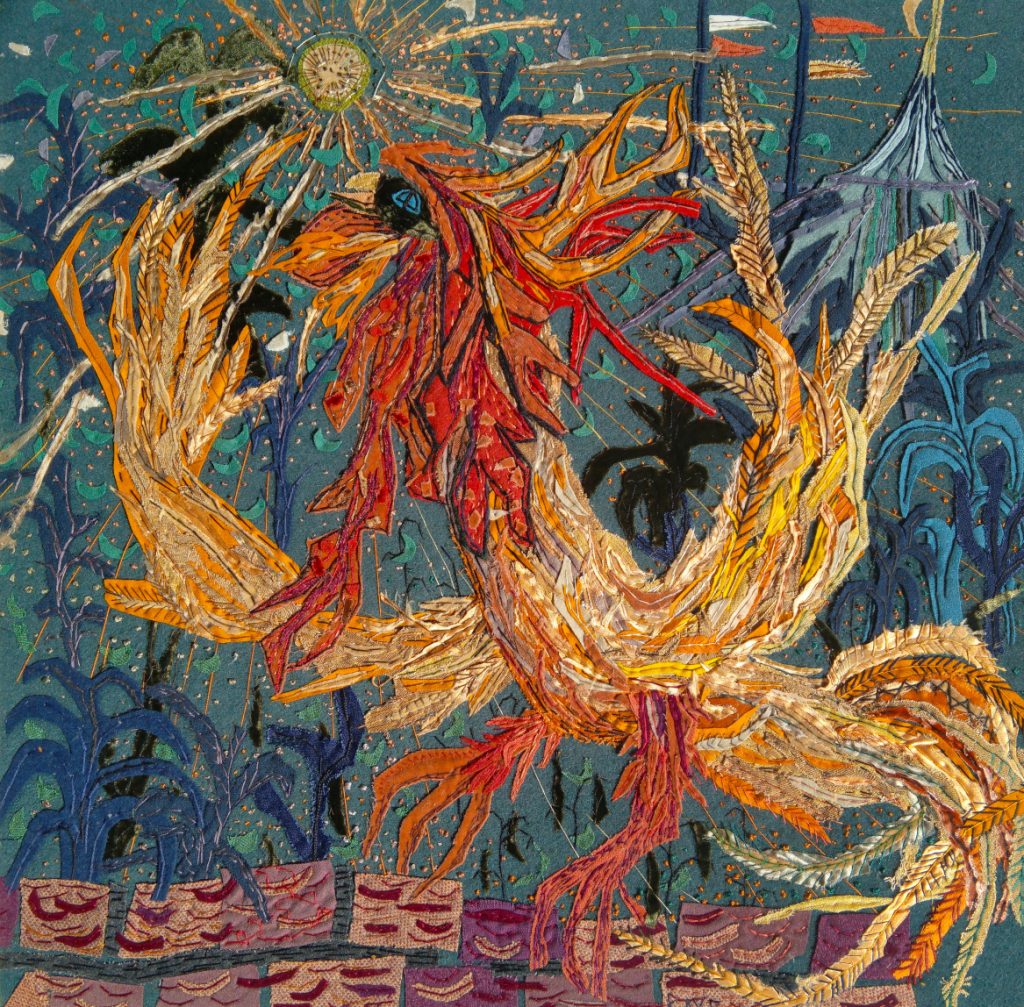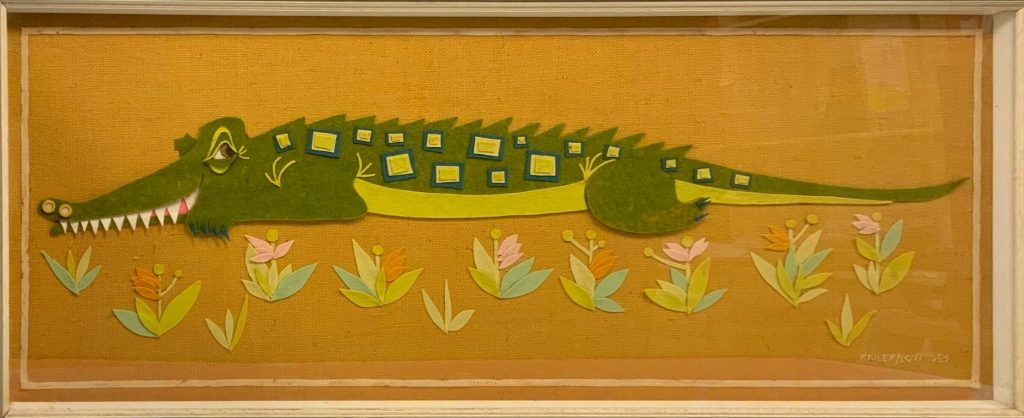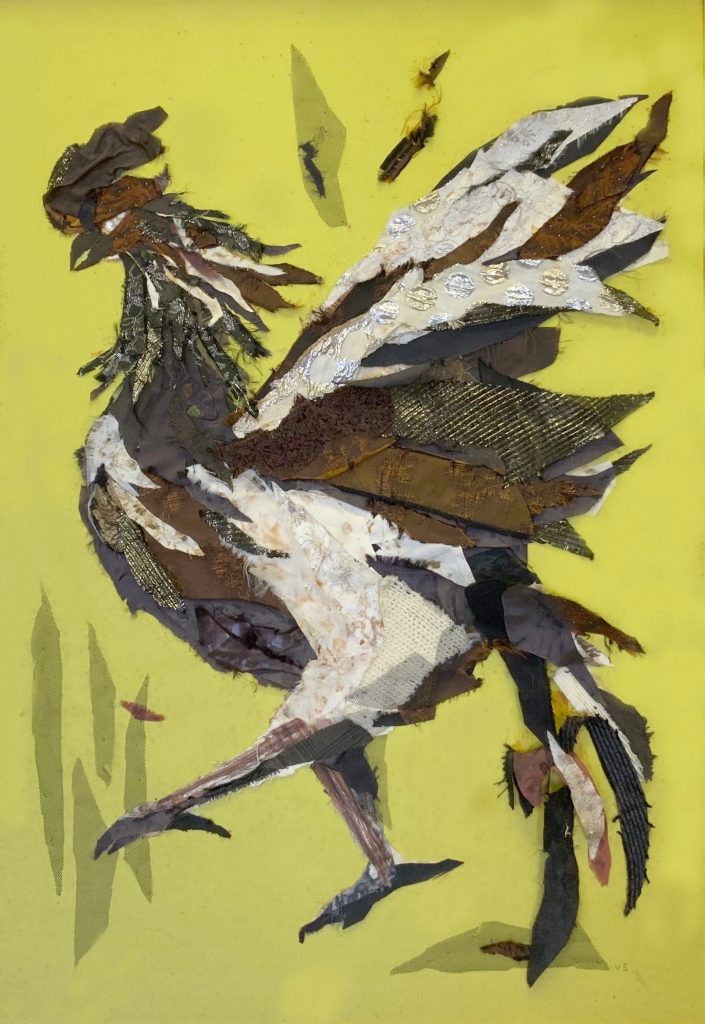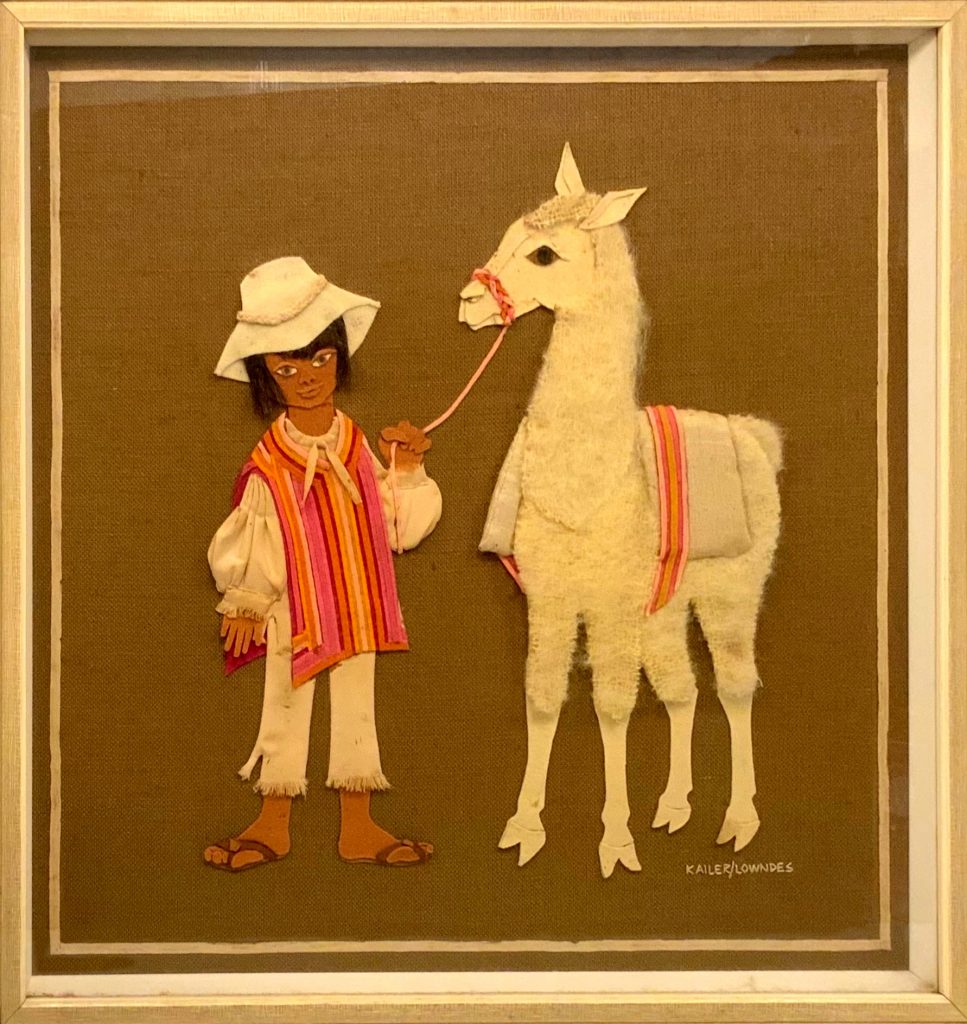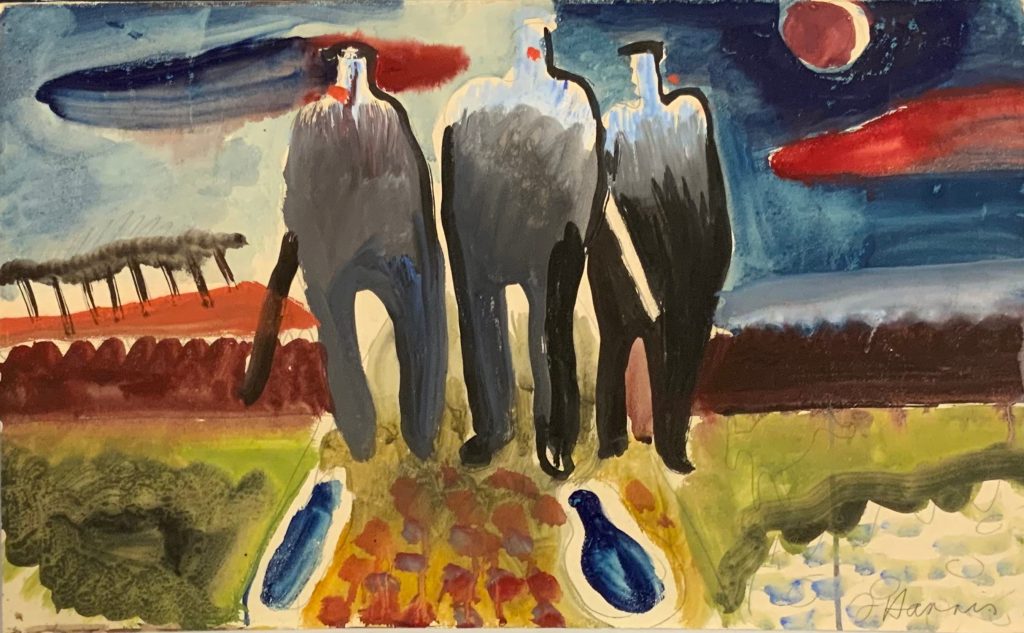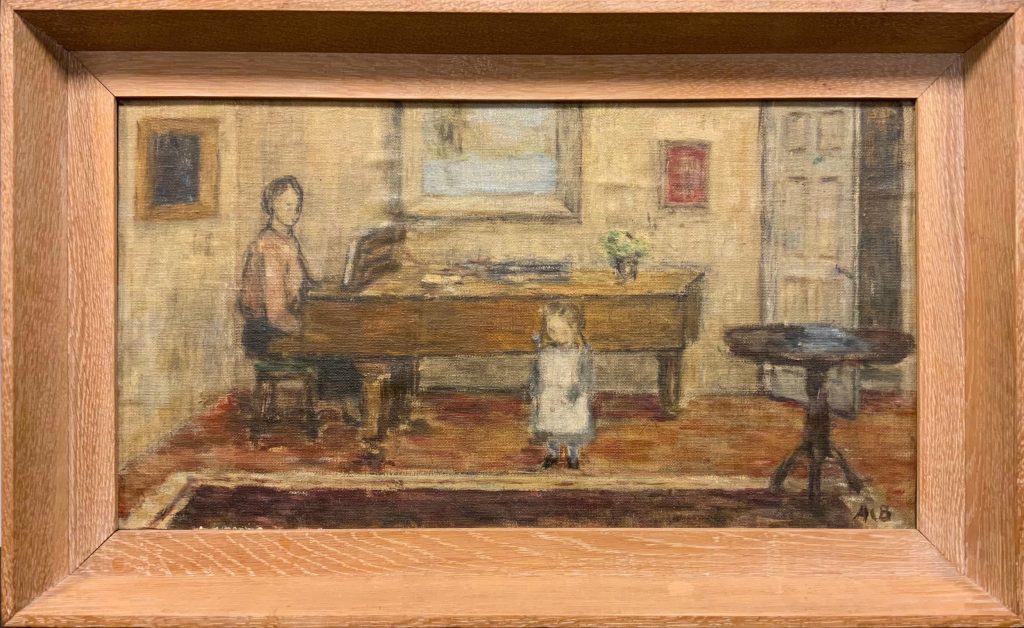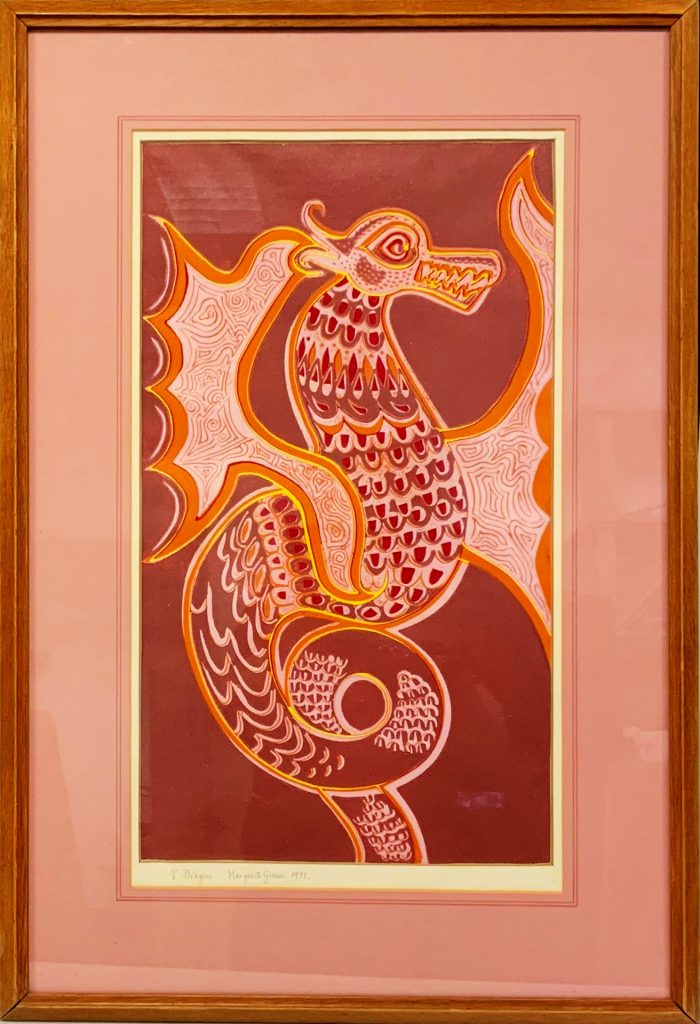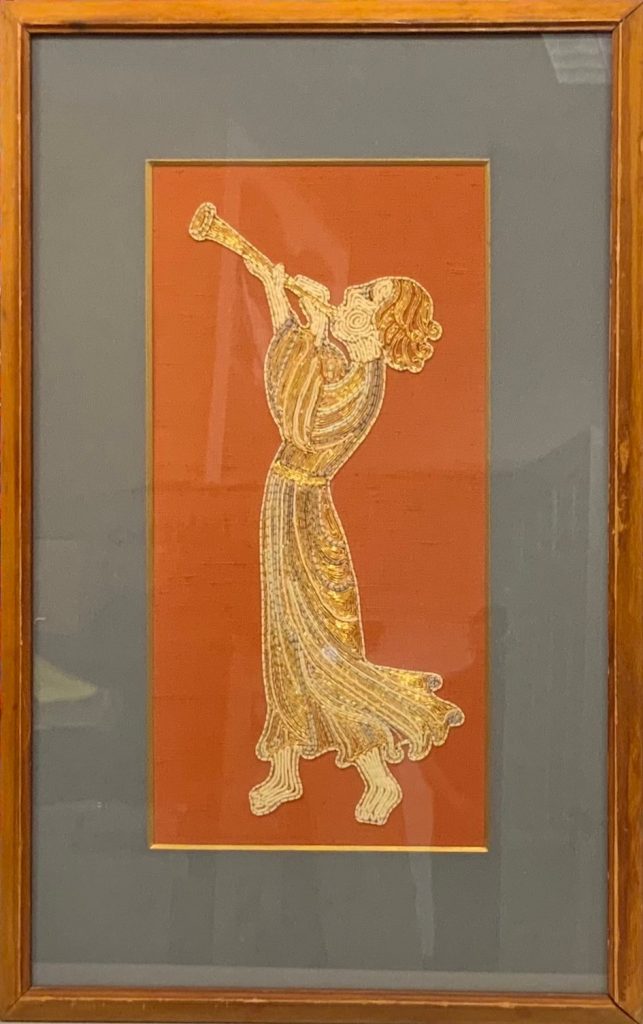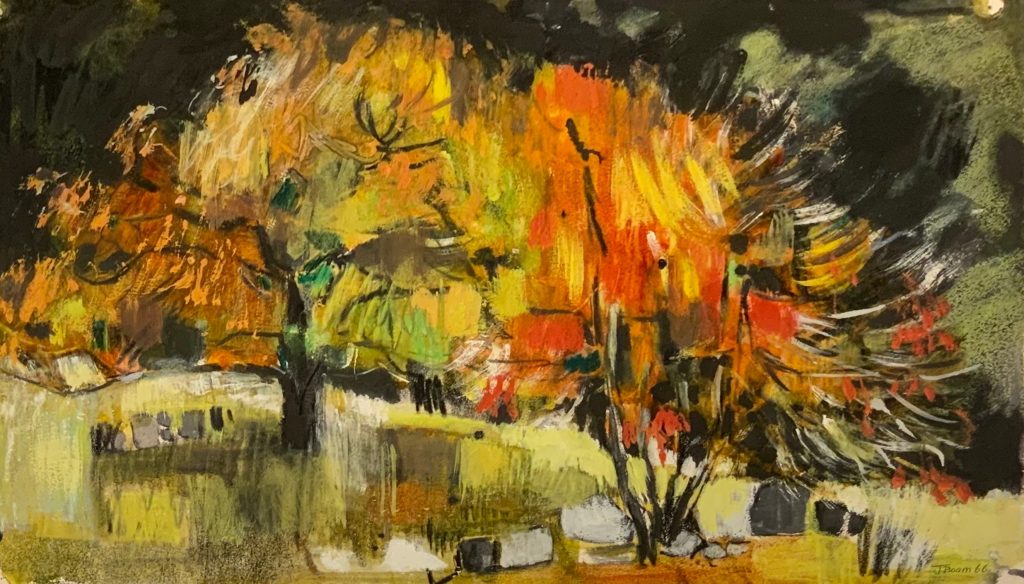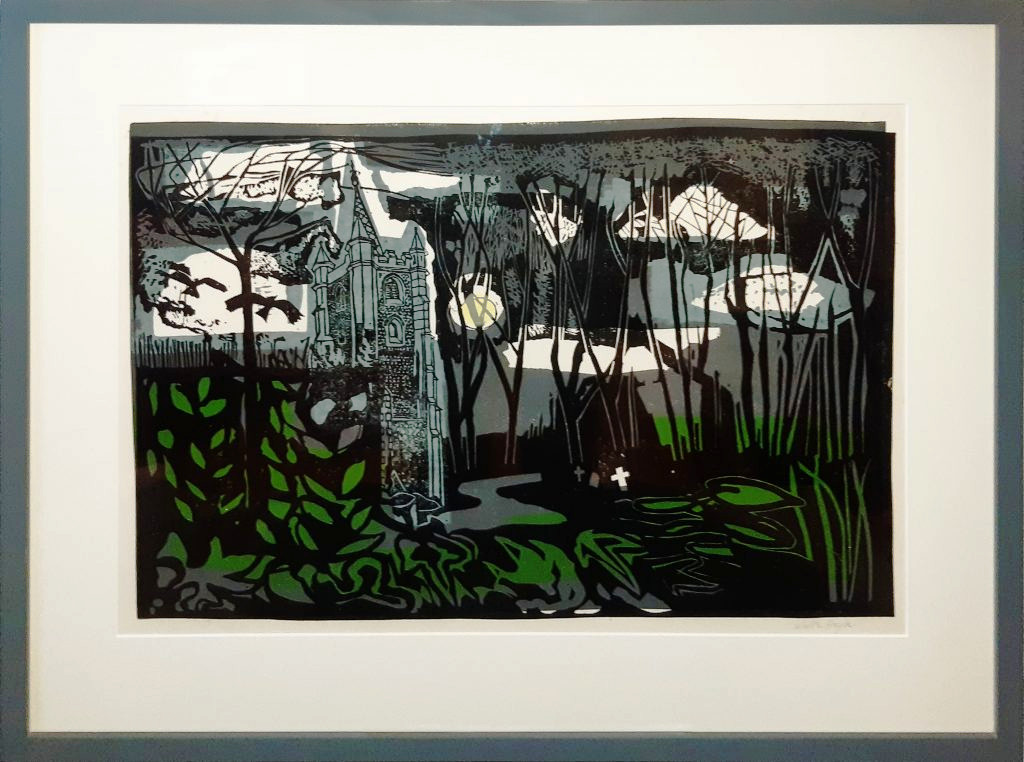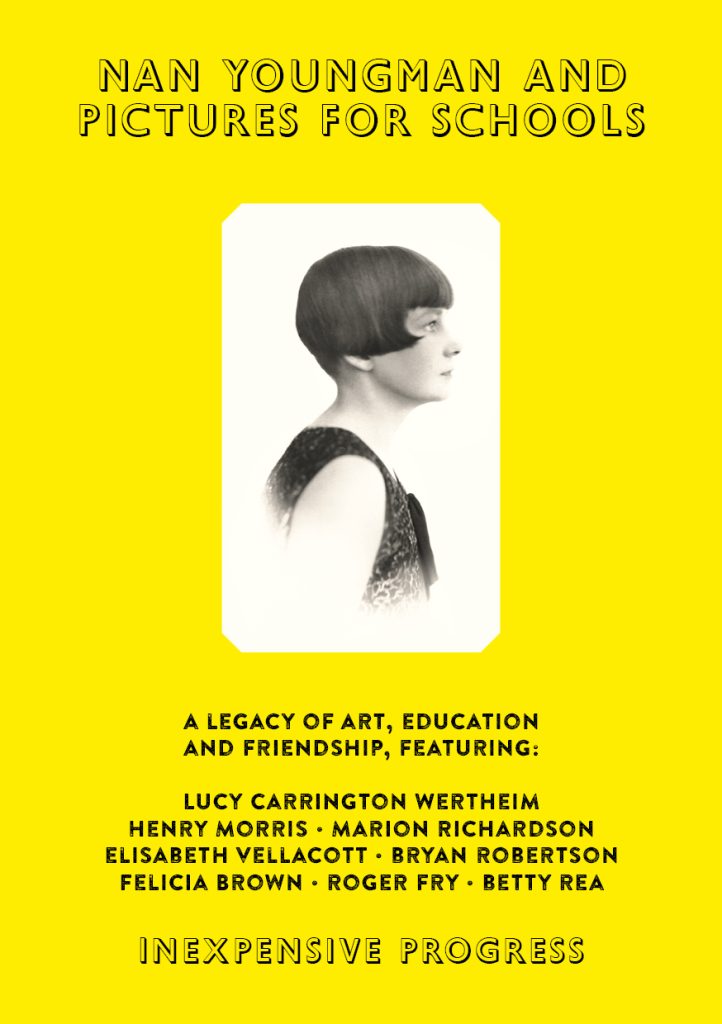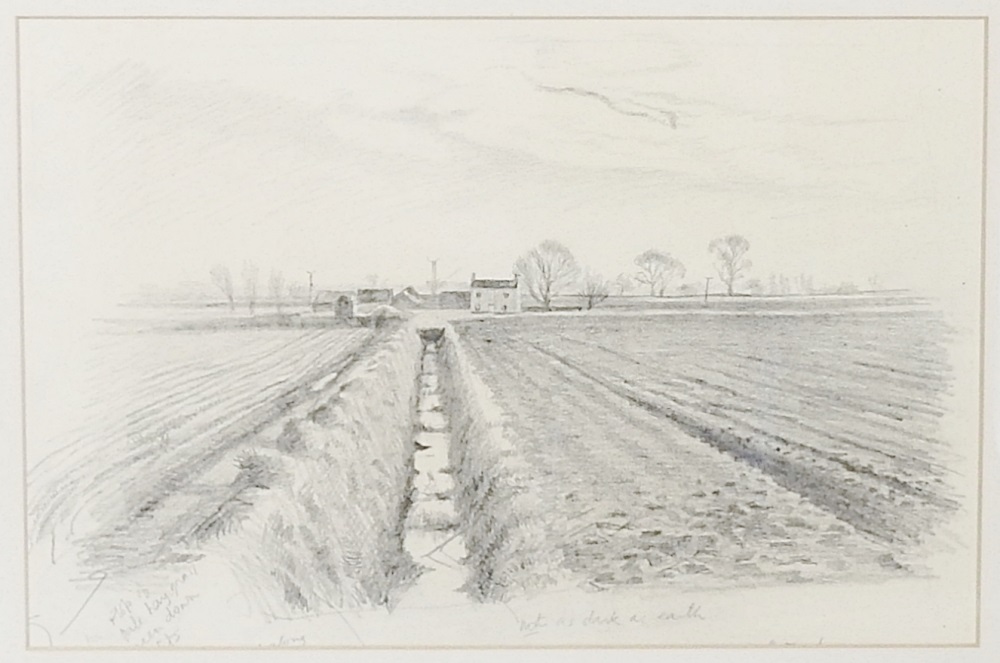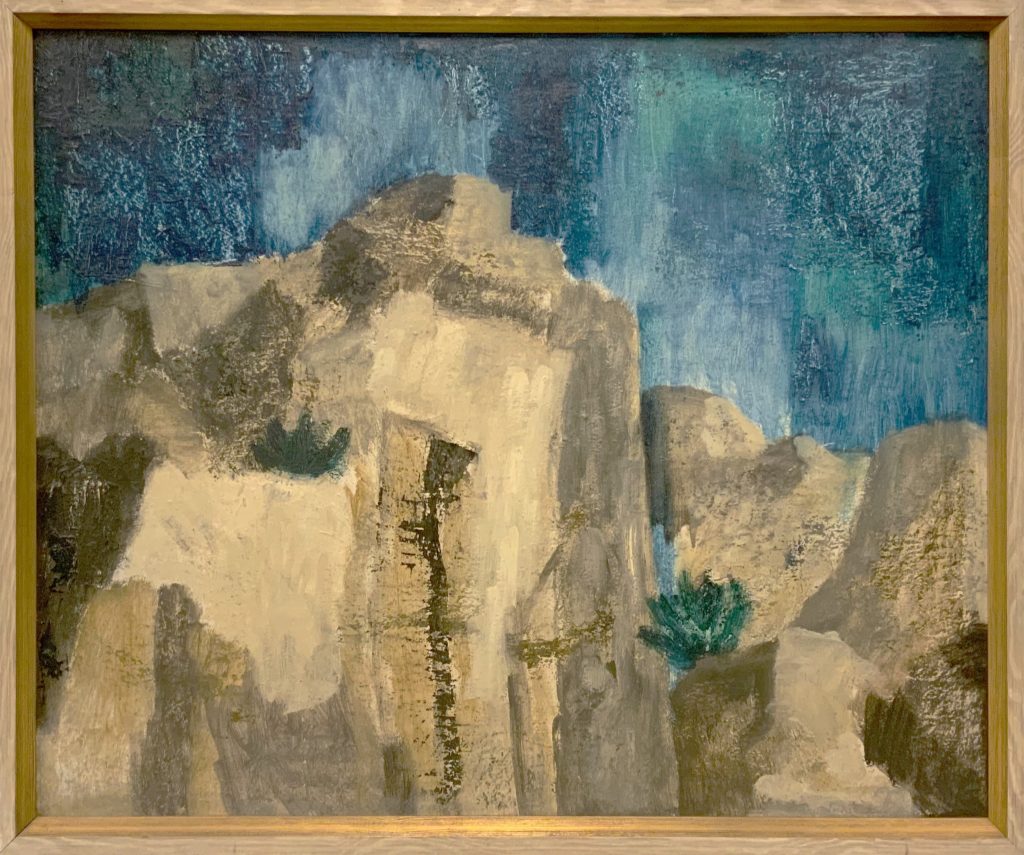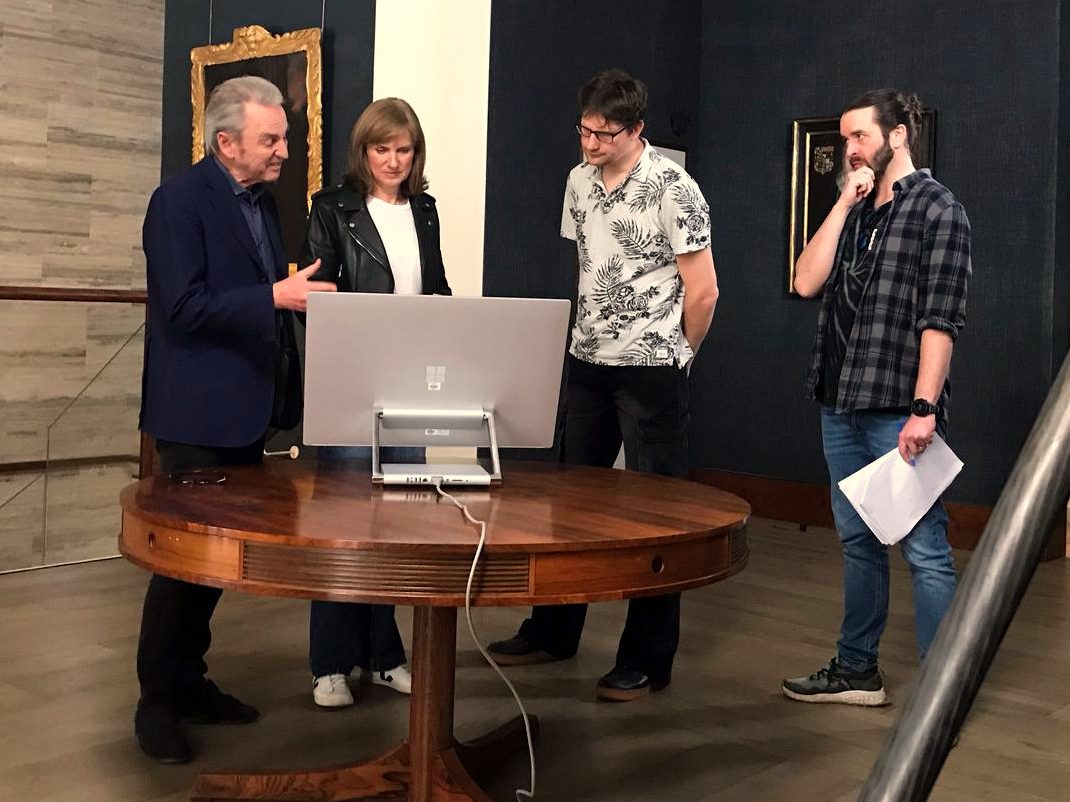
As part of my time on Fake or Fortune recently, we looked into the founding of Pictures for Schools and the Hertfordshire collection. So I thought I would make a blog post as both a little footnote to the show and of my Nan Youngman book.
Pictures for Schools was a series of exhibitions where only councils could buy works by well known artists of the day. They ran from 1945 to 1969 and were all organised by Nan Youngman. After a council purchased a work it normally was sorted by the Library service and then loaned out to different schools by the council. They could be rotated each term from school to school.
Nan Youngman was an artist who studied under Henry Tonks at the Slade School of Art and trained to become a teacher under Marion Richardson. Nan had worked as an art teacher in many girls schools until the Second World War, when she came to Cambridgeshire as her school was evacuated to Huntingdon. There she got a job working for Cambridgeshire County Council under Henry Morris, the pioneer of the Village College schools. Working with Morris at a Council and also with the Society for Education in Art in the 1940s, Nan Youngman was trying to pitch her ideas for getting paintings in schools.
She convinced Morris to invest in paintings by living artists and they bought a Lowry on behalf of the council to hang in schools, but Nan was looking for a wider audience under her job at the SEA.
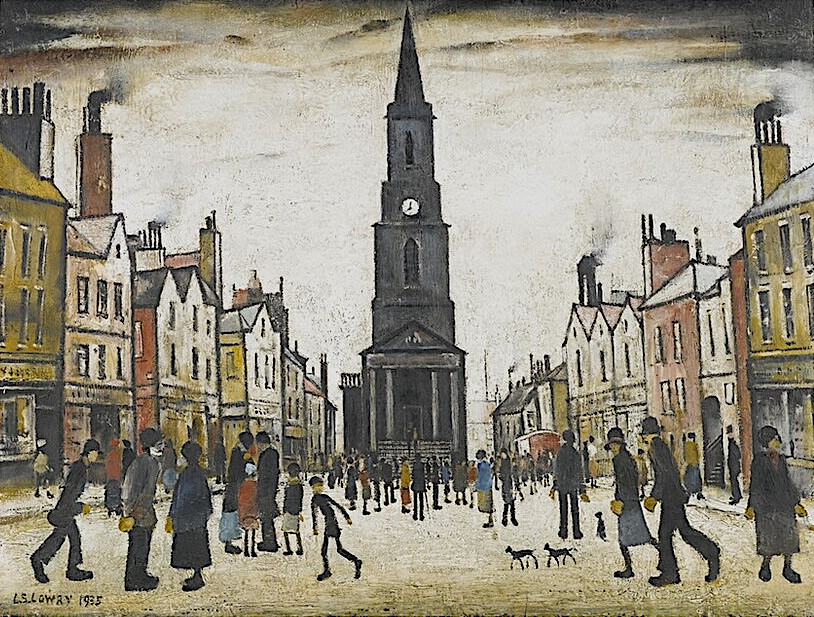
These works were used in lessons with an information pack – so that a painting of a farm might be used to talk about farming, geography, people and their jobs, as well as in art lessons. Though I do go into all this in the book.
In support of having a scheme of having art in schools, Hertfordshire’s Chief Education Officer John Newton wrote to Nan Youngman in 1943, that the price of a professional painting was abohe waut 2 to 5 guineas more than a professional Medici framed print, adding
“I won’t repeat to you the advantages of originals over reproductions but, particularly in the teaching of Art, I think it is valuable for children to see pictures which are good and which do not look beyond their own capacity. For instance, children would feel at once that an [William] Orpen or a Russell Flint was quite beyond them because the technique is so finished, whereas Christopher Wood and [Ronald Ossory] Dunlop look as if they could be done by anybody even though they cannot.”
The first Pictures for Schools exhibition took place in 1947 with the support of the Arts Council of Great Britain. It was hosted at the Victoria and Albert Museum, who were still reinstating their collections from their wartime storage and so had space for this exhibition. The catalogue had text by Herbert Read, who wrote ‘schools can be made a little more ennobling in their atmosphere by the judicious display of original works of art’. The patrons and board of the SEA featured Clive Bell, Duncan Grant, Kenneth Clark and Misha Black. Councils were invited to buy works for their collections to hang in schools.
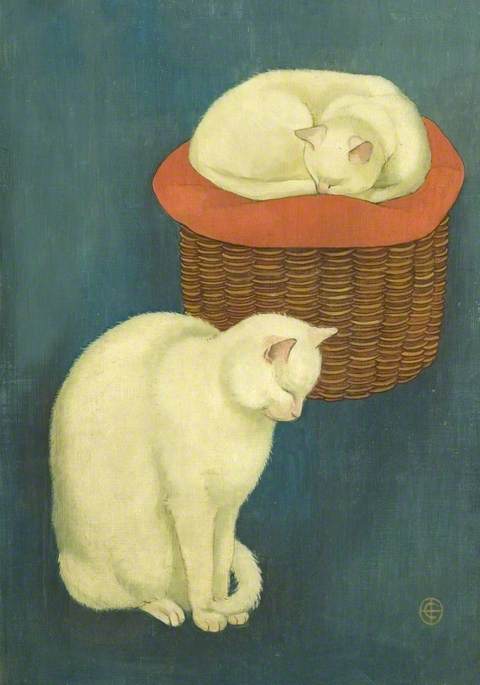
The picture selection committee for the first exhibition included Carel Weight, John Nash, Edward Bawden and Michael Rothenstein. The second had Bawden, Barnett Freedman, Clive Gardiner, Percy Horton, Peggy Angus, Rothenstein, Kenneth Rowntree, and Beryl Sinclair to name a few.
As I was finishing off the book off when the show was filming, I left text below out as the show transmitted after the book was published.
Hertfordshire County Council’s schools collection was established to collect contemporary works of art and craft by living artists, however in the early days of the collection, possibly in the late 1940s, a rare donation of four older works was made by the same mysterious donor. In 2019, when the council auctioned off their works, this donation was included. The four paintings were Cornstooks, by Vera Cunningham (who had been Matthew Smith’s model and prodigy); two Frances Hodgkin paintings, Flowers and Spanish Pottery (1928) and Still Life with a vase of flowers and eggs (1931); while the fourth painting [at the time of auction] was a mystery… It was an unsigned work on the front, it had been in a broken frame, so that when it was reframed, the details on the original frame and backboard were lost. Once back from the framers, it re-entered the Hertfordshire collection as an unknown work, later to be sold by an auction house, as a presumed Vera Cunningham.
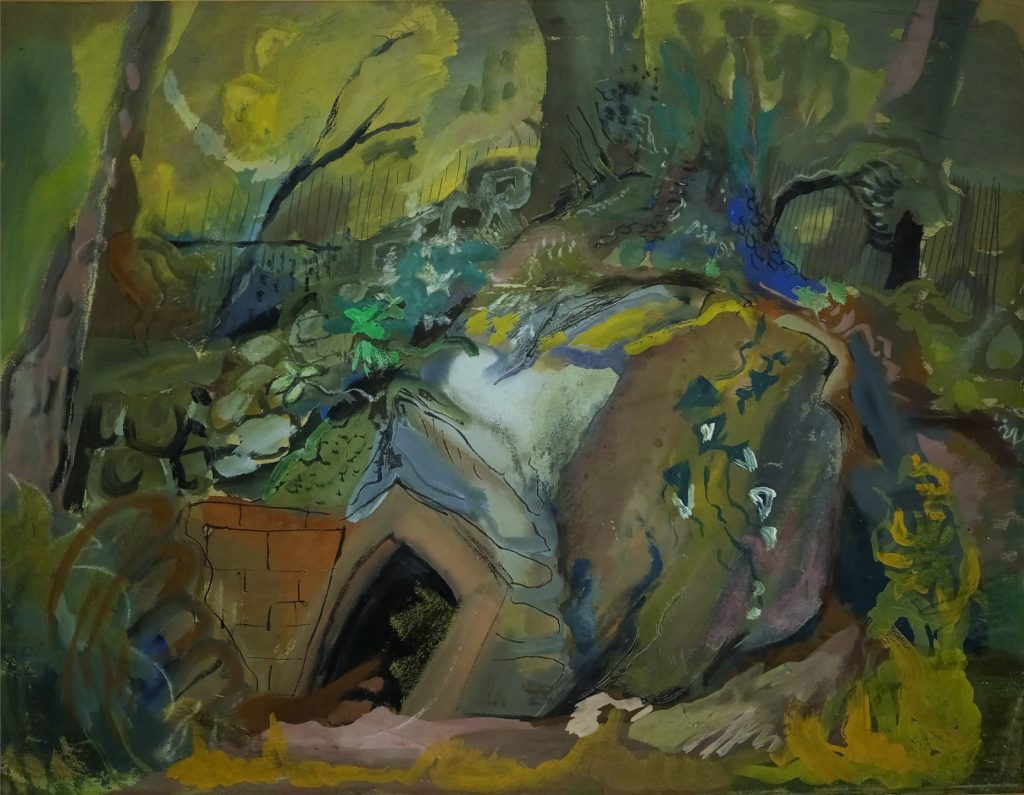
However, thanks to Mary Kisler, a leading Frances Hodgkins researcher who worked with the BBC show Fake or Fortune, I can confirm this unknown painting is Frances Hodgkins’ – October Landscape, Entrance to Dolaucothy Mine (1943) which was exhibited at the Lefevre Galleries at the show ‘A new Series of Gouaches painted during 1942-1943’. Sadly, due to the Hertfordshire records for the collection being lost, no one can confirm who donated these four paintings and the Tate archivist Adrian Glew never got back to me.
These exhibitions put Youngman in the centre of things, as Esther Grainger once wrote, “Nan knows everyone – that is, every painter, sculptor, and craftsman in Britain, and everyone concerned in art education from before the last war and for decades after it”. Her experience as a teacher meant she understood what was missing in schools, a link to creative and social element found in art.


Brooke, C.; White Cats; Derbyshire & Derby School Library Service; http://www.artuk.org/artworks/white-cats-60680 

